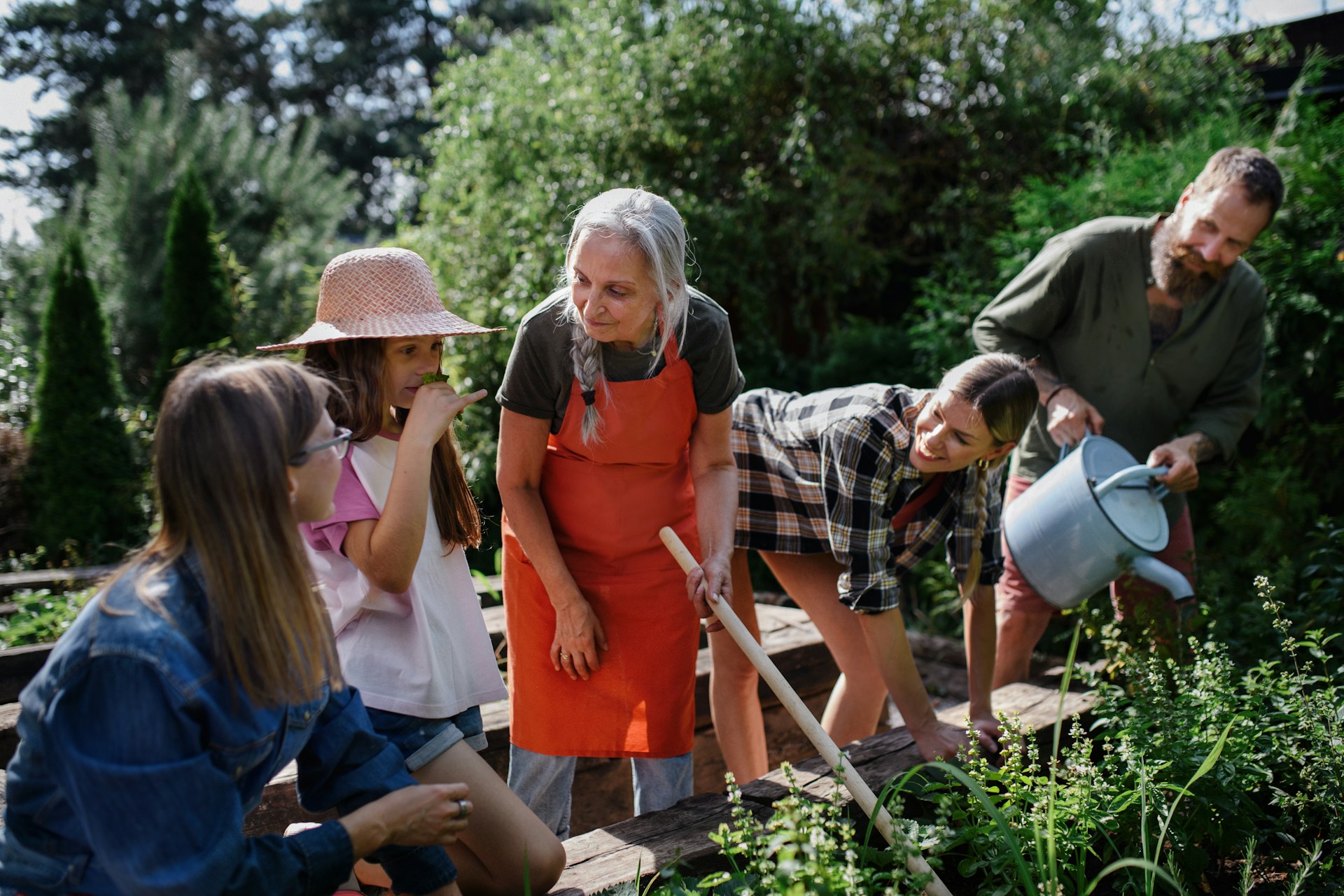Preparedness
Stay Safe: Essential Tips for Navigating Civil Unrest

In today’s unpredictable world, the potential for civil unrest is a reality that cannot be ignored. Regardless of personal opinions or political beliefs, it’s evident that the threat of such disturbances is increasing.
Civil unrest disrupts the usual social order, manifesting in various forms such as strikes, protests, and even riots or rebellions. These events often arise when groups seek to highlight perceived injustices.
Riots, in particular, are marked by chaotic crowds engaging in violence and disorder. They can erupt from civil unrest but are also known to occur spontaneously during celebratory events, like when a sports team wins. The unpredictability and spontaneous nature of riots make them difficult to anticipate and prepare for.
Riots gain momentum as people gather in the streets, energized by the collective presence of like-minded individuals. Often, it takes just one person to initiate a disruptive act, such as throwing an object or starting a fire, for others to follow suit. Without countermeasures, these acts can quickly escalate.
While some participants in civil unrest are driven by genuine beliefs, others may be incentivized to incite chaos, or exploit the situation for criminal activities with minimal consequences.
To safeguard against the unpredictability of civil unrest and riots, maintaining situational awareness is crucial. Staying informed through local news can help you anticipate potential demonstrations or issues in areas you frequent.
If you’re traveling to new locations, set up keyword alerts to receive updates about any relevant news. Pay attention to conversations around you, and observe body language to gauge if tensions are rising.
Trust your instincts; if something feels off, it’s wise to heed that intuition.
Having a plan in place is equally important. Consider potential scenarios and responses, which will give you an advantage if unrest occurs. Identify escape routes and safe havens like hospitals or public buildings.
Ensure you have funds for transportation in case you’re separated from your vehicle, and establish meeting points with family or friends.
Avoiding potentially volatile situations is key, and being prepared for various possibilities will enhance your readiness.
Your everyday carry items can also be vital in emergencies. Consider carrying a small first aid kit, pen knife, or flashlight on your keychain.
Familiarize yourself with your neighborhood, as knowing alternative routes can be invaluable if protests block your path home. Exploring your town regularly and memorizing street names can help you navigate efficiently.
If you find yourself caught in a riot, staying calm is paramount. This is a time for decisive actions, not emotions. Remain observant and adaptable to the changing situation.
“Keep to the edge of the crowd where it is safest,” and avoid being identified as a demonstrator by steering clear of leaders or agitators. At the first chance, break away and seek refuge in a nearby building or alley until the crowd disperses.
“When leaving the fringe of the demonstration just walk away – don’t run as this will draw attention to you.” If caught in the crowd, avoid glass shop fronts, stay on your feet, and move with the flow.
If you’re swept along, create breathing space by grasping your wrists and bracing your elbows away from your sides. Should you fall, get against a wall, roll into a ball, and cover your head until it’s safe.
In the event of gunfire, drop to the ground, cover your head and neck, and lie flat. If you’re in a vehicle, avoid driving through the crowd. Instead, find a side street, back up, or turn around calmly.
If unable to drive away, park, lock your vehicle, and try to blend into the crowd until you can safely exit. Should you be trapped in your car, lock the doors, keep windows up, and remain calm without showing hostility.
In summary, surviving a riot involves avoiding them when possible, resisting the urge to satisfy curiosity, and always having your everyday carry gear. Stick with companions for safety, and if caught in the middle, move away from violence discreetly.
Familiarize yourself with your surroundings and potential escape routes to enhance your preparedness.
Let us know what you think, please share your thoughts in the comments below.

Preparedness
Survive Smarter Pack Lighter Essential Tips for Emergencies

In the world of survival, the mantra “less is more” holds significant weight. When faced with an emergency scenario, the ability to move swiftly and efficiently is crucial. Carrying a hefty load can hinder your progress and wear you out, especially if you’re not accustomed to hauling a 60-pound pack regularly. Instead, focus on the essentials and aim to keep your pack under 25 pounds.
The temptation to fill your bag with gadgets and gear can be strong, but it’s important to remember that the more you know, the less you need to carry. By honing your survival skills, you can significantly reduce the amount of equipment you need to lug around. This approach is particularly beneficial in a “Get Out Of Dodge” situation, where speed and agility are paramount.
Your gear should be streamlined, with a focus on necessities. Some redundancies are wise for critical items, but avoid overloading your pack. A durable backpack in natural colors like grey, muted greens, browns, or blues is ideal, as it blends well in both woodland and urban environments. Avoid camo patterns or tactical-looking bags that might draw unwanted attention in urban areas.
When it comes to shelter, think versatile and lightweight. A shelter kit should include something to sleep under, on, and in, along with cordage for assembly. A tarp can be more advantageous than a tent, offering flexibility and doubling as rain gear if needed. For bedding, consider filling contractor-grade trash bags with leaves or grass, or opt for a high-tech sleeping pad. An emergency blanket or poncho liner, often called a “woobie,” can serve as your sleeping bag.
“Try using 550 paracord just for the ridgeline – this means you will only need to pack about 60 feet of it.” For the rest of your shelter construction, #36 bankline is a solid choice. While stakes can be fashioned from natural materials, packing six aluminum or titanium tent stakes can be beneficial, especially if you’re dealing with challenging conditions.
Fire-making is another critical skill. It’s wise to have at least three methods for starting a fire: a Bic lighter, a ferro rod, and a Fresnel lens are good options. Ready-made tinder, such as cotton balls with Vaseline or a tin of mini-infernos, can be invaluable when you’re cold and wet, and your dexterity is compromised.
In summary, lightening your load is about prioritizing skills over equipment and ensuring your gear is both efficient and effective. By doing so, you can cover ground quickly and meet your immediate needs without unnecessary strain.
Let us know what you think, please share your thoughts in the comments below.
Preparedness
Find Your Perfect Survival Retreat: Isolation or Community?

When it comes to selecting a survival retreat, the choice is as much about location as it is about lifestyle. The key is to find a balance between isolation and accessibility, while ensuring that the site is defensible and sustainable. The three primary categories for such retreats are “in-town,” “rural,” and “isolated.” Each offers distinct advantages and challenges that must be considered carefully.
An “in-town” retreat is typically located in a small community with a population of around 3,000 or less. This setting offers the advantage of being part of a community, which can provide security arrangements and opportunities for barter. Access to community clinics and local resources can also be beneficial if medical personnel reside in the area.
However, living in a small town comes with its downsides. Privacy can be limited, and in a grid-down situation, sanitation issues may arise. There’s also a heightened risk of communicable diseases and the potential for supplies to be confiscated. Additionally, keeping livestock could be restricted to smaller animals like chickens or rabbits.
Rural retreats, where neighbors are visible but not too close, offer a different set of benefits. The proximity of friendly and cooperative neighbors can provide a sense of community and shared resources. This setup often includes established livestock, gardens, and orchards. Moreover, having people nearby can be invaluable for major tasks such as planting and harvesting.
Despite these advantages, rural living shares some challenges with in-town retreats. Privacy might be compromised, and there remains the risk of supplies being confiscated or feeling pressured to share them.
For those seeking complete privacy, an isolated retreat might be the ideal choice. These locations are generally remote, with no visible neighbors, offering lower land and housing costs. The seclusion allows for stockpiling supplies and building fortifications without prying eyes. Additionally, the risk of communicable diseases is significantly reduced.
However, isolation comes with its own set of challenges. It can be difficult for a small family to maintain and defend such a retreat. Access to medical, fire, and police assistance is limited, even in normal times. Furthermore, the lack of nearby community means isolation from barter opportunities and a longer commute to jobs and essential services.
When choosing a retreat location, consider the terrain. “A retreat situated in a hilly or mountainous region is preferable to one on the plains in the event of a worst-case scenario.” The natural barriers of such terrains can make them easier to defend, as opposed to the multiple access points found in plains areas.
The ideal home for a retreat should be robust and practical. Look for a masonry house with a fireproof roof, or a wood-frame construction in earthquake-prone areas. An oversized lot provides room for expansion and storage. A house with at least one more bedroom than needed allows for additional storage and the potential to accommodate friends or family in need.
Ultimately, your choice of a retreat location should align with your ability to maintain it and your readiness to adapt to its challenges. Whether you choose an in-town, rural, or isolated setting, the goal is to create a sustainable and defensible haven that meets your survival needs.
Let us know what you think, please share your thoughts in the comments below.
Preparedness
Master These Survival Skills Before Disaster Strikes

In the face of an uncertain future, mastering a diverse set of preparedness skills is more crucial than ever. While reading about a skill might offer some theoretical knowledge, it is the hands-on experience that truly builds competence. As we reflect on the past, our pioneer forefathers were adept in a wide range of practical skills, essential for surviving harsh environments. They managed to run farms with what we now consider primitive tools, demonstrating the value of versatility.
One of the foundational skills to cultivate is gardening. Starting with a small vegetable garden in your backyard can be incredibly rewarding. This approach allows for experimentation with both food plants and medicinal herbs. As you nurture your garden, you will gain insights into soil management, pest control, and plant diseases, all of which are vital for maximizing harvests.
“Starting with a small backyard garden has its benefits,” as it provides a forgiving environment to learn from mistakes without jeopardizing your primary food supply. As you progress, you might find yourself eager to expand your knowledge to fruit trees and field crops.
Another essential skill is animal husbandry. Many people today struggle to connect the meat on their plates with the farms that raised the animals. Beginning with small livestock like rabbits and chickens can be a manageable first step. Over time, you can work your way up to larger animals such as goats, pigs, and cows. This journey will teach you about the labor involved, feeding them with natural resources, and preparing them for the table.
“Butchering an animal is no easy task.” It requires practice, and emotional hurdles must be overcome as you become attached to the animals you raise. These are lessons that books alone cannot teach; hands-on experience is indispensable.
For those interested in dairy, understanding the specific nutritional needs of dairy animals is crucial. Grass or forage-based dairying is a valuable area to explore. Cheesemaking, for instance, is both an art and a science. It is a skill that your family will appreciate, and it can also serve as a barter item in times of need.
Cooking is another skill that should not be overlooked. Mastery in cooking with available supplies and various fuel sources is vital. “If you don’t have a stove, making a fire that provides a continuous flame can become a challenge itself.” Experience with improvisation, such as substituting ingredients like powdered eggs for fresh ones, will be necessary to ensure meals remain nutritious during prolonged disasters.
Lastly, developing a knack for repairs can be incredibly beneficial. In a world where we often discard broken items, learning to fix things can extend the life of appliances and vehicles. “You will be surprised how many things can be fixed or how much you can do on a car to keep it running.” Embrace the challenge of diagnosing problems and finding creative solutions to maintain functionality.
In conclusion, being prepared isn’t just about having supplies; it’s about mastering a range of skills that ensure self-reliance and resilience. By embracing the hands-on learning experiences our ancestors relied upon, we can better equip ourselves for whatever the future holds.
Let us know what you think, please share your thoughts in the comments below.
-

 Tactical1 year ago
Tactical1 year ago70-Year-Old Fends Off Intruder with Lead-Powered Message
-

 Tactical1 year ago
Tactical1 year agoVape Shop Employee Confronts Armed Crooks, Sends Them Running
-

 Preparedness1 year ago
Preparedness1 year agoEx-Ballerina’s Guilty Verdict Sends Tremors Through Gun-Owner Community
-

 Preparedness11 months ago
Preparedness11 months agoGood Samaritan Saves Trooper in Harrowing Interstate Confrontation
-

 Tactical1 year ago
Tactical1 year agoMidnight SUV Theft Interrupted by Armed Homeowner’s Retaliation
-

 Survival Stories2 years ago
Survival Stories2 years agoEmily’s 30-Day Experience of Being Stranded on a Desert Island
-

 Preparedness11 months ago
Preparedness11 months agoArizona Engineer’s Headless Body Found in Desert: Friend Charged
-

 Preparedness11 months ago
Preparedness11 months agoBoy Saves Dad from Bear Attack with One Perfect Shot